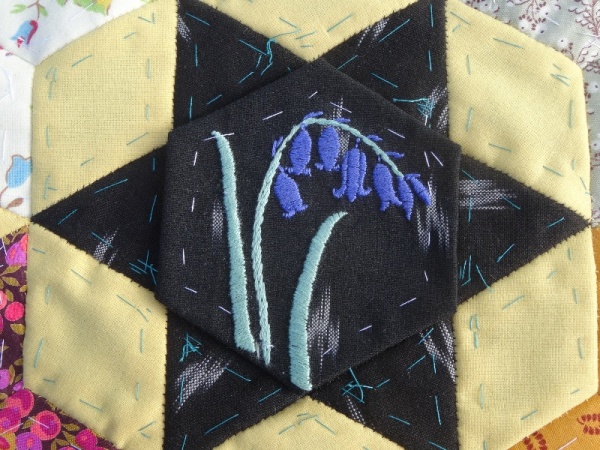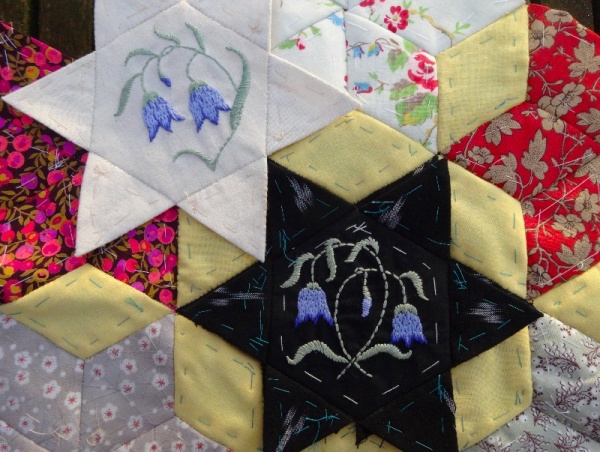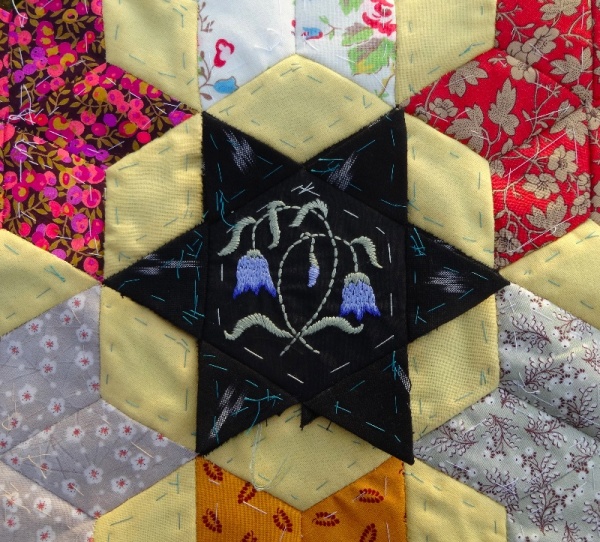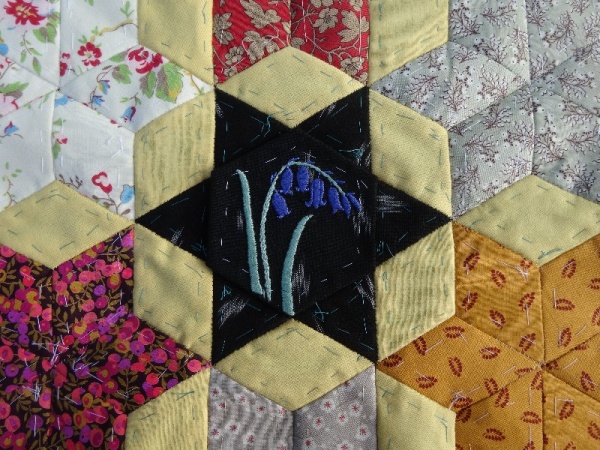With new sewing at a dangerous low – i.e. projected Christmas presents only in evidence on the drawing board – I am relieved to be able to call upon a couple of flowers finished recently for the altar frontal. Bluebells and harebells are not exactly seasonal but I take heart from the current Persephone post that while bluebells may not be the flower of December thinking about them is none the less tremendously life enhancing.
I first blogged the harebell here at a time the bluebell was in full flower but since then I decided all the embroidered flowers would look better on a black background. So here is the revised harebell and a bluebell, both with the right background.
The true British bluebell (Hyacinthoides non-scripta), like the red squirrel, is under threat from introduced species, in this case the interloping Spanish bluebell (Hyacinthoides hispanica) and their hybrid (Hyacinthoides x massartiana) which is even more of a problem than its Spanish parent and which seems to have spread prolifically in the wild due at least in part to the unregulated dumping of garden waste. A recent survey of British bluebells has shown that both the Spanish species and the hybrid are more vigorous than the native and those that have studied these things say that we have reached the stage where growth of the former two species should be controlled in gardens close to woodlands with English bluebells. Considering that the hybrid was first recorded in the wild in 1963, its spread if not rapid looks at least to be very secure and determined. As Britain has about 50% of the world’s H. non scripta, we must take good care of what we have. At the very least we should stop planting the other 2 species in our gardens and possibly we should even be removing and burning these plants.
Identify your bluebell, the main differentiating characteristics:
1. The native bluebell’s flowers hang from the same side of the stem which gravity causes to bend over in a characteristic curve. The spanish and hybrid stalks are thicker and bend less.
2. Native flowers are more narrowly tubular and curl back upon themselves more flamboyantly.
3. Native flowers are generally a darker, more purplish blue.
4. Pollen in native flowers is creamy, while that of the others is noticeably pale green or blue.
5.Only the native plant has the characteristic strong, sweet smell.
It should be noted that identification is easiest when the plants are young. As they get older the native species becomes paler, the identifying pollen has been dispersed and plants of all species tend to curve over. I now think the plants in the vicarage garden are alien interlopers and with massed native bluebells in the woods nearby, I shall be alert and prepare for the cull if necessary when flowers appear.
Do read this BBC article for more information.





4 Comments
The black background does make the flowers stand out beautifully.
Glad you agree the flowers work much better on black.
I am amazed that you have the patience to re-embroider all these flowers Mary! Though I do think they stand out beautifully on the black background. What are you going to do with all those you did originally on white? X
The trouble is that when I’m taken by what I think is a better idea I can’t not do it (and it’s true that sometimes when I’ve tried both, the first idea does turn out to be better).
It’s nothing to do with patience but to do with getting something that satisfies you.
Not sure yet what to do with the flowers on the off white fabric – but I’m sure I’ll find a use for them.